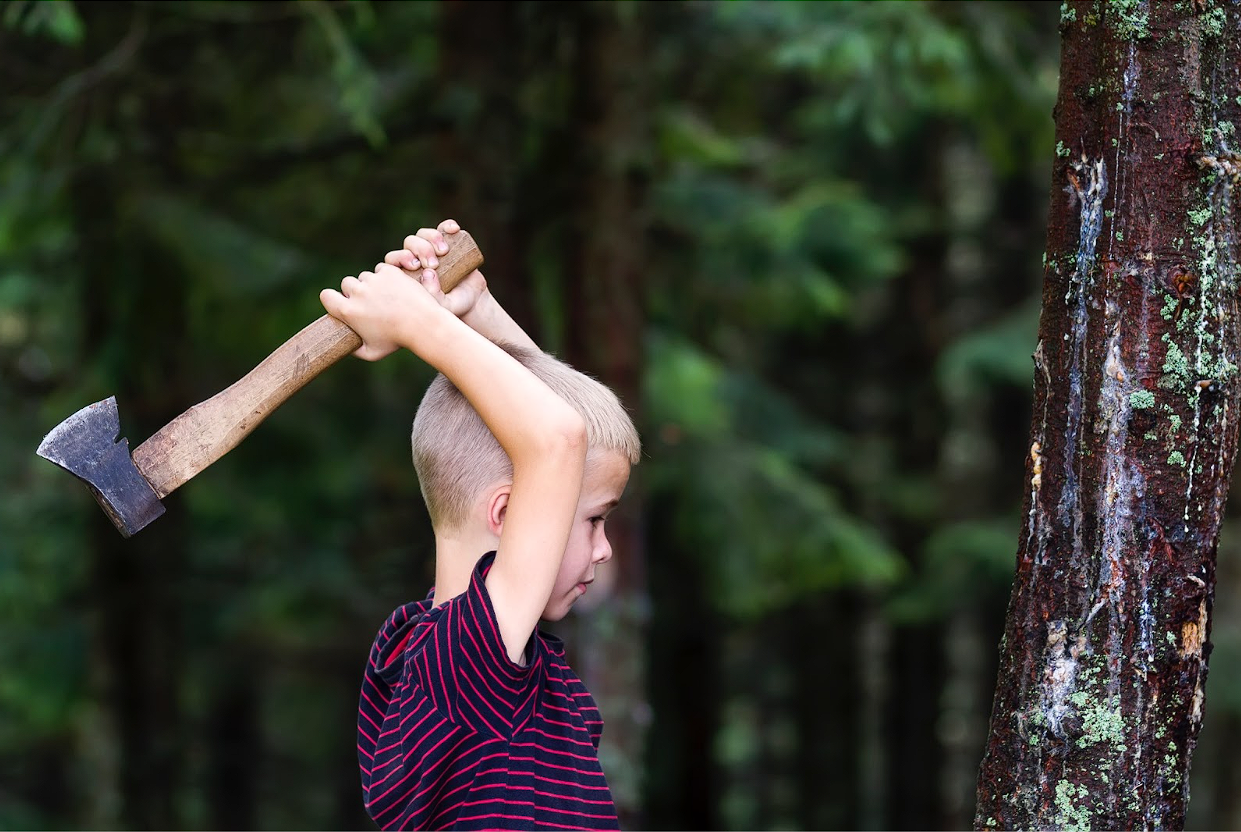The History of Axe-Throwing: From Ancient Warriors to Modern Enthusiasts
Axe-throwing has gained immense popularity as a recreational activity in recent years, but it has a history deeply rooted in ancient traditions. What was once a crucial skill for survival and warfare has evolved into a competitive and entertaining pastime for modern enthusiasts. In this exploration of the history of axe-throwing, we’ll journey through the ages, discovering the origins, evolution, and cultural significance of this fascinating practice.

Ancient Origins: A Tool Turned Weapon
The origins of axe-throwing can be traced back thousands of years to the early days of human civilization. Axes, initially crafted as essential tools for hunting, woodworking, and daily tasks, eventually found their way onto the battlefield as formidable weapons. The transition from tool to weapon marked the beginning of the ancient practice of throwing axes in warfare.
Viking Warriors: Masters of the Battle Axe
Among the civilizations that embraced axe-throwing as a military strategy, the Vikings stand out as masters of the battle axe. The iconic image of a Viking warrior hurling a double-headed axe at an enemy is deeply ingrained in popular culture. These skilled warriors used throwing axes both in close combat and from a distance, showcasing their versatility and prowess on the battlefield.
Cultural Significance: Rituals and Ceremonies
Beyond the battlefield, axe-throwing became ingrained in various cultures through rituals, ceremonies, and rites of passage. In many societies, the act of throwing an axe symbolized strength, skill, and bravery. The ability to accurately throw an axe was often associated with qualities that were highly esteemed in those cultures.
Native American Traditions: The Tomahawk
In North America, Native American tribes had their own version of the throwing axe known as the tomahawk. Used for both utility and warfare, the tomahawk became a symbol of honor and a valuable tool for trade. Tribes like the Cherokee and Iroquois incorporated tomahawk throwing into ceremonies, competitions, and even as a form of diplomacy.
Axe-Throwing in Modern Times: Sport and Recreation
As societies evolved and the need for axe-throwing in warfare diminished, the practice transitioned from a survival skill to a recreational activity. The 19th and 20th centuries saw the emergence of axe-throwing as a sport in various forms.
Lumberjack Competitions: Showcasing Skill and Precision
In the logging communities of North America, lumberjack competitions became popular events that celebrated the skills of those working in the timber industry. Axe-throwing competitions were a thrilling component of these events, showcasing the precision and strength required for this activity.
Axe-Throwing Renaissance: Rise of the Urban Lumberjack
In recent years, axe-throwing has experienced a renaissance, transforming from a niche activity to a mainstream form of entertainment. The urban lumberjack trend has taken hold in cities around the world, with dedicated axe-throwing venues opening their doors to enthusiasts looking for a unique and adrenaline-pumping experience.
Modern Venues: A Fusion of Fun and Competition
Axe-throwing venues, often set in industrial-chic spaces, provide a casual and social environment for participants. These venues offer a range of experiences, from casual axe-throwing sessions with friends to organized leagues and competitive tournaments.
Participatory and Inclusive: Anyone Can Throw
One of the key factors driving the contemporary popularity of axe-throwing is its accessibility. Unlike many traditional sports that require specialized equipment and extensive training, axe-throwing is relatively easy for beginners to pick up. This inclusivity has attracted a diverse range of participants, making axe-throwing a social activity enjoyed by people of all ages and backgrounds.

A Timeless Pursuit with a Modern Twist
From its humble beginnings as a survival skill in ancient warfare to its resurgence as a popular recreational activity, the history of axe-throwing is a testament to its enduring appeal. Today, enthusiasts can immerse themselves in the thrill of hurling an axe, connecting with a rich history that spans cultures and centuries. Whether embraced as a competitive sport or a social pastime, the art of axe-throwing continues to captivate modern audiences, offering a unique blend of tradition and contemporary excitement. As urban lumberjack venues continue to flourish, it’s clear that the allure of throwing an axe has transcended time, proving that some traditions are indeed timeless.
Visit the Propel Axe blog today to learn more about axe throwing and how you can enjoy the sport.


 720-330-9755
720-330-9755
